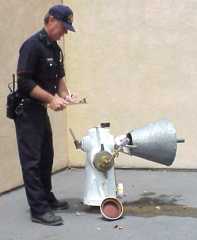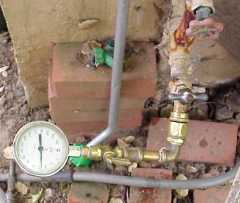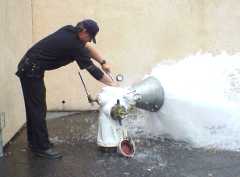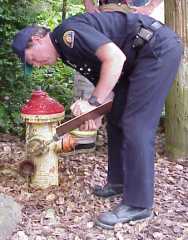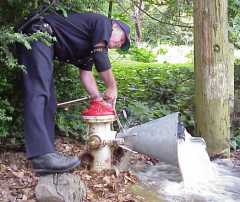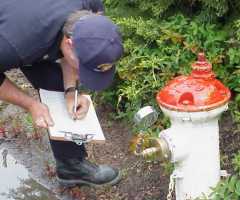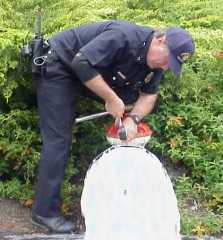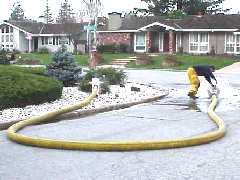© 2001 Capt. Willis Lamm, Water Supply Officer, Moraga-Orinda (CA) Fire District |
| CONDUCTING TESTS |
| While there are slight variations in procedures involving multi-valve, single valve and single outlet hydrants, the general process is basically the same. |
|
Wet barrel and multi-valve hydrants
|
Recording the static pressure at the hydrant
|
|
Key Points:
Make sure ditches and drains are free from leaves and debris and will adequately carry off discharged water. Don't waste water but flow the hydrant long enough so that the residual pressure stabilizes before taking readings. Always watch the flow of the water and take mitigating steps if runoff starts to overflow drainages and heads toward private property. |
|
Multi outlet dry barrel hydrants
|
Taking a static reading before the
|
|
Single outlet hydrants
|
Taking a static reading
|
| RUNOFF DIVERSION |
|
Some locations may present the test crew with runoff problems. It may be
desirable to direct the discharge carefully toward a storm drain or other
safe drainage.
One option involves attaching a short length of large diameter hose (equal or greater diameter than the pumper outlet.) Place the end of the hose at the desired drainage point, then attach a 2½ inch reducer and diffuser basket on the end of the hose. So long as the elevation of the discharge is approximately equal to the pumper outlet the reading will be correct. (For measurable elevation differences subtract ½ Lb. of pressure for each foot that the basket is below the outlet, or add ½ Lb. for each foot above.) |
Reading from the diffuser basket
|
Continue to Part Four
Return to Part Two
Return to Water Supply Index
Back to Information Section
|
Unless otherwise noted, all contents of these WWW pages © 1996-2002, FireHydrant.org |
